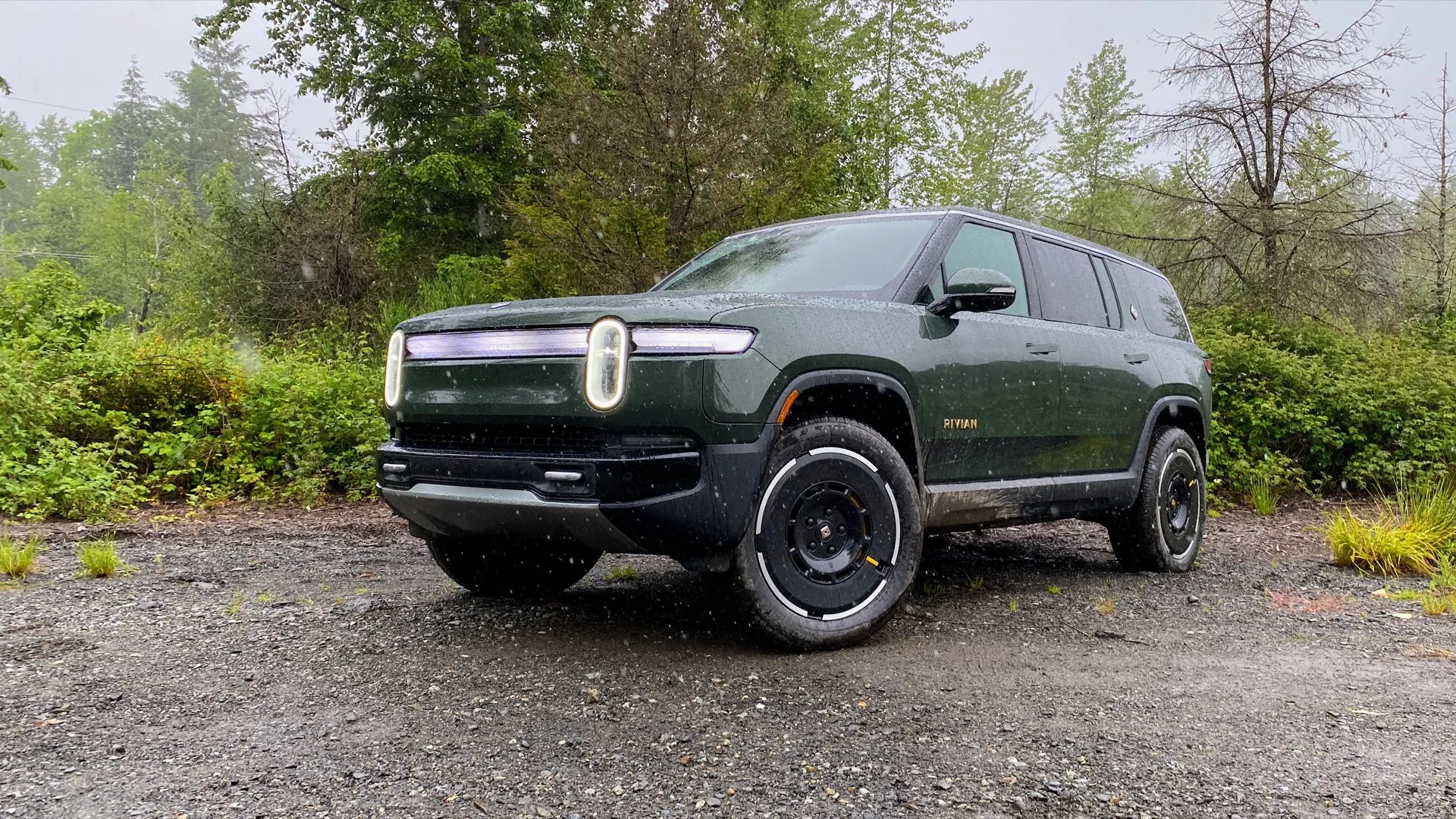-
Rivian has re-engineered the batteries, motors, and body structure of its R1T and R1S
-
This year the R1 vehicles get their first lithium-iron-phosphate (LFP) batteries
-
The revamp may give the R1 vehicles more in common with Rivian’s upcoming R2 series
Rivian this week in Seattle rolled out its revamped R1 family that will take the adventure-focused brand onward and upward, more efficiently and comfortably.
Against a skyline dominated by the Space Needle, I set out driving several models in this refreshed lineup—enough to understand that Rivian has made them undeniably better in most ways. Meanwhile, Rivian is threading its own needle between what R1 owners and premium EV owners want, what’s forward-compatible with its eagerly anticipated Rivian R2 lineup, and what the company itself needs to survive as an independent American automaker.
At face value, in body shape and cabin design, the Rivian R1S electric SUV and Rivian R1T electric pickup can look deceivingly similar to their predecessors. But nearly all of the components and technology details within them have been changed for the better. Even the body structure under the sheet metal has changed for easier assembly and weight savings.
2025 Rivian R1 lineup
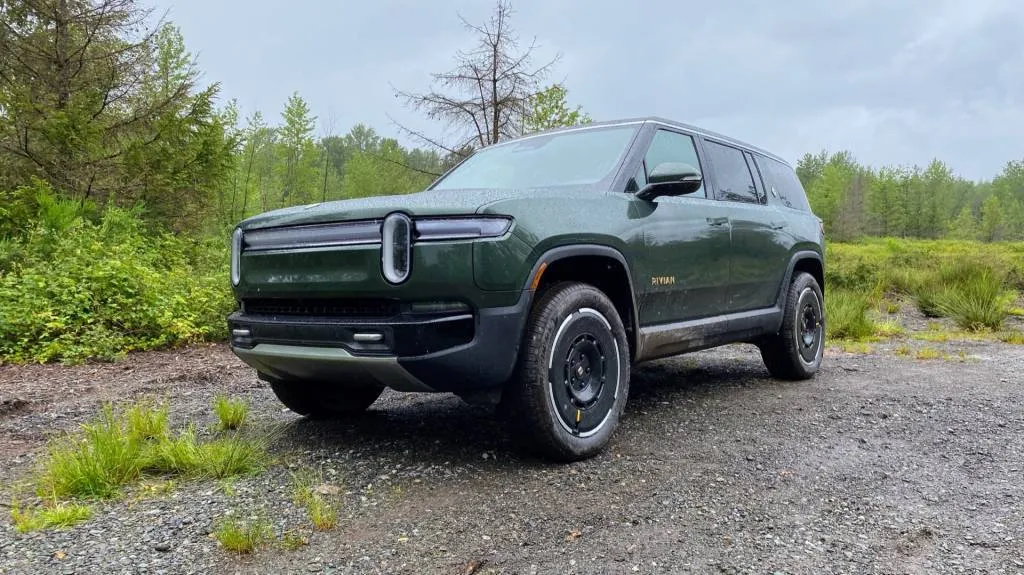
2025 Rivian R1 lineup
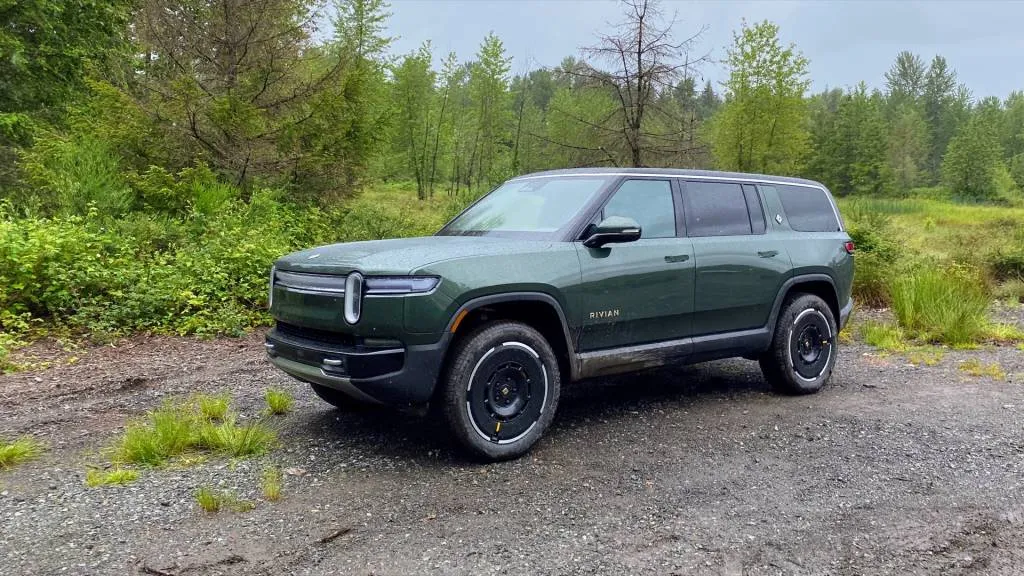
2025 Rivian R1 lineup
Over a couple of days with the Rivian team in Seattle, Green Car Reports got an understanding of how Rivian went systematically down the punchlist, surgically fixing nearly every line item that Rivian’s early adopters wanted to see changed—and adding many clever things that will help bring new owners into the fold.
2025 Rivian R1T and R1S taps 2, 3, or 4 motors
In their new configuration, the 2025 R1S and R1T will be offered in Standard pack, Large pack, and Max pack battery sizes, with Dual-Motor, Tri-Motor, and Quad-Motor layouts.
Last summer brought Dual-Motor models to market with new Rivian motors, also used in EDV. Now, the R1 lineup retires the previous Quad-Motor layout by adding two sizes of dual-motor modular units incorporating Rivian’s own oil-cooled motors inside.
These motors are set up to be made in quantity, and they may, based on hints, help the company lean into the smaller R2 lineup. Across their different packages, they have the same windings and magnets, with inverter tech shared front and rear and designed in-house. Rivian follows a philosophy that still emphasizes the front motors for efficiency while the rear motors are there for performance and can be disconnected.
Rivian notes that the new Tri-Motor models are quicker than the previous Quad-Motor versions. Quad-Motor models include two different motor couples in modularized form, with smaller motors in front, altogether delivering 1,025 hp, with 1,198 lb-ft of torque in launch control mode, and providing 0-60 mph acceleration in less than 2.5 seconds according to Rivian. Tri-Motor versions make 850 hp and 1,103 lb-ft from the same dual-rear-motor package but with a single motor at the front wheels, for a 0-60 mph time of 2.9 seconds. Dual-Motor models split into regular and performance versions, with the former making 533 hp and 610 lb-ft (4.5 seconds) and the latter making 665 hp and 829 lb-ft (3.4 seconds).
There’s very little to distinguish these models on the outside. Quad-Motor brake calipers get a new color, Laguna Blue, with a low-key “QUAD” badge in the middle of their rear badge, while Tri-Motor models get yellow calipers and a yellow badge strip in back.
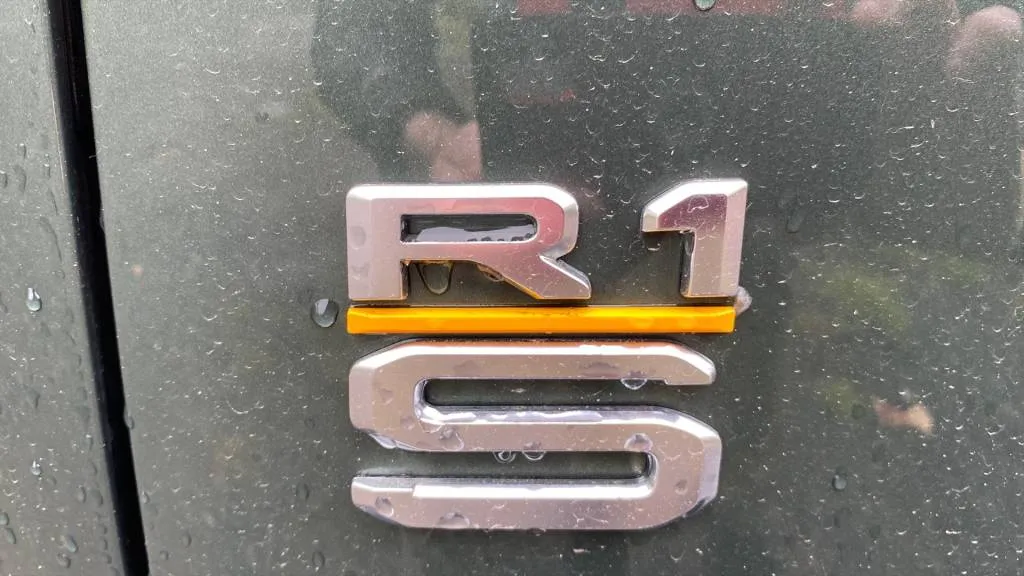
2025 Rivian R1 lineup
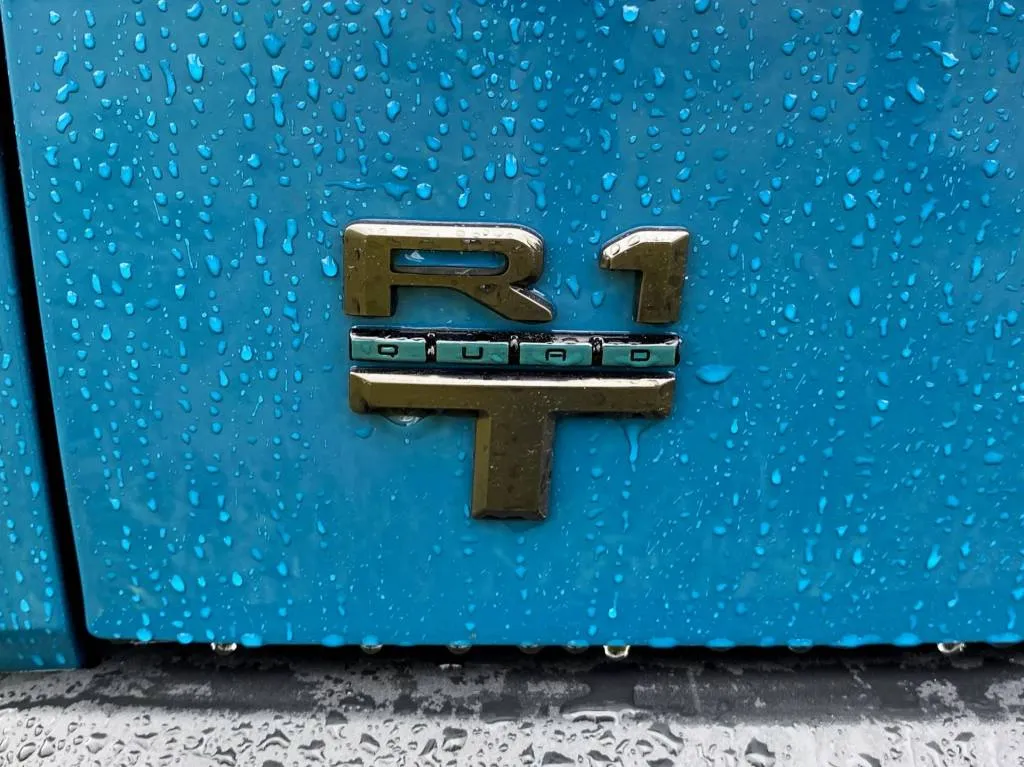
2025 Rivian R1 lineup

2025 Rivian R1 lineup
The Tri- and Quad-Motor versions are set up so that the rear motors deliver extra punch—with a 11.7:1 reduction ratio in the back, versus 9.1:1 in front. As I experienced with launch control in a Quad-Motor model on a dragstrip, these trucks will leap away from a standing start and hold close to their max power to a higher speed than before.
Rivian follows a complicated torque distribution algorithm that varies between drive modes. The dual-motor units used in the back of 3-motor models and in front and in back in 4-motor models aren’t connected and each turn their respective wheels. Dual-Motor and Tri-Motor models at the front wheel use their single motor package in combination with a differential and brake-torque application instead. No matter which configuration, the R1 family can detach the motors to the front or rear axle as needed for traction or efficiency, and the R1 still defers to the front wheels under light acceleration and during most cruising conditions, sending more power to the rear motors when needed especially for acceleration.
The R1T and R1S retain their peak tow ratings of 11,000 and 7,700 pounds, respectively.
R1S, R1T get LFP Standard Pack, lighter Large and Max
Rivian has evolved its battery pack design for weight savings, manufacturability, and cost, while keeping the architecture that relies on a flat cooling plate sandwiched (in Large and Max Packs) between two layers of cells. The Standard Pack has 92.5 kwh of usable capacity, while the Large Pack has 109.4 kwh and Max Packs are essentially unchanged at 141.5 kwh.
Yes, for Standard and Large packs, those are lower capacities than for the 2024 models. But thanks to efficiency improvements Rivian notes that ranges start at 258 EPA miles, and even Standard Pack versions are expected to roll in at 270 miles—the same range as provided by the 106-kwh Standard Pack for Gen 1, to underscore how pronounced the efficiency improvements are. Range ratings aren’t finalized yet, but it expects up to 420 miles of EPA range with the Dual-Motor R1T and Max Pack and up to 410 miles with the Dual-Motor R1S and Max Pack. Rivian says that the second-generation R1T will be the most efficient truck on the market, and we look forward to seeing that in real-world use.
New 22-inch wheels—not 21-inchers—are the aero optimized picks of the lineup, leading to a coefficient of drag as low as 0.297 and helping maximize range.

Rivian R1 heat pump
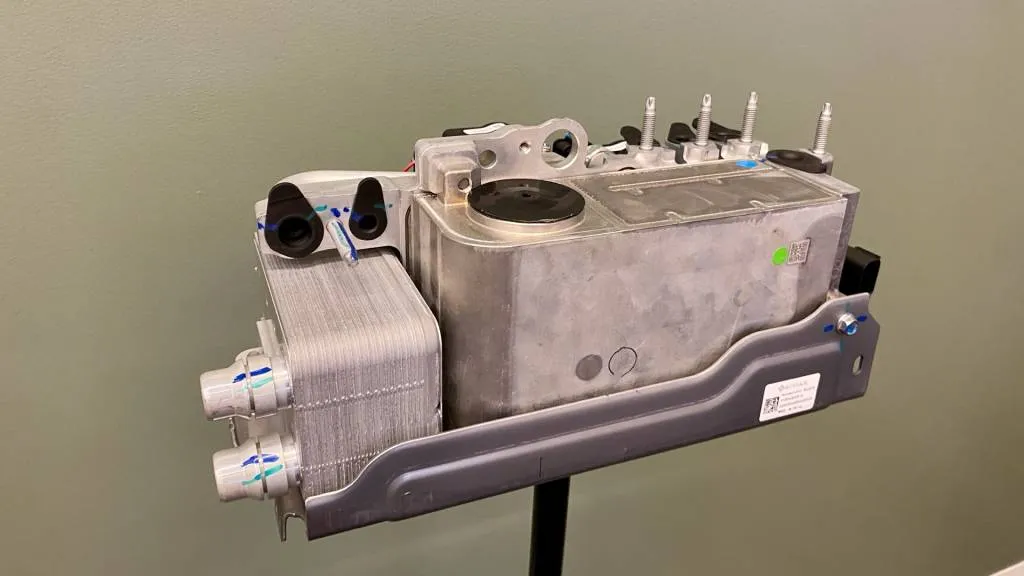
Rivian R1 heat pump
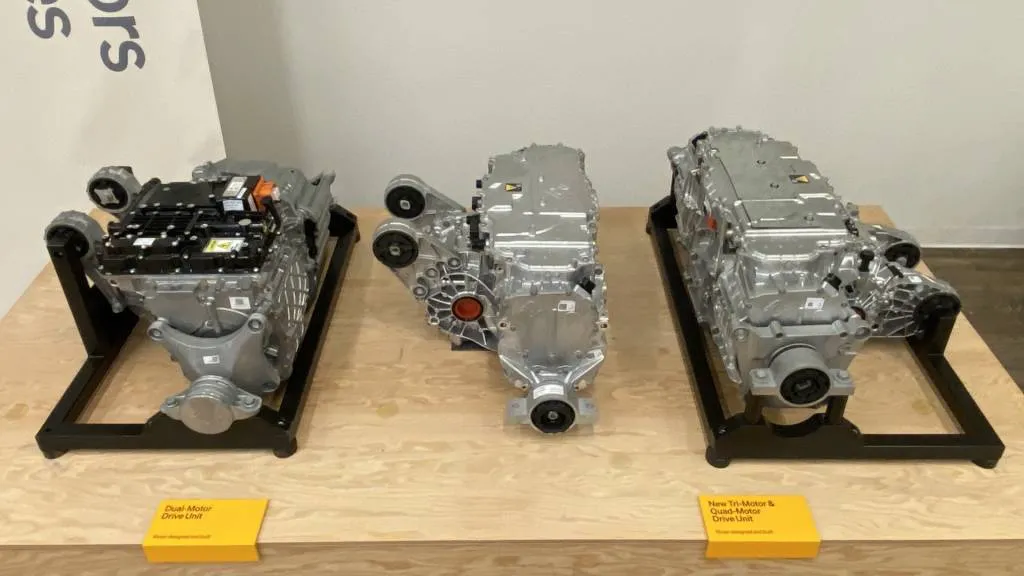
Rivian motor systems
And the heat pump is here. The unit that’s at last been introduced to the entire R1 lineup improves real-world range by up to 10 miles on average, or appreciably more in specific situations. It allows Rivian to drop the conventional resistive heater, instead opting for an element that heats the coolant when needed—and when it can keep that heat in the system.
Further, summing all these improvements to efficiency and manufacturability, it says that the carbon footprint of the R1 has been cut by 15%.
Large Pack and Max Pack versions retain their 2170-format cylindrical cells in the same NCA (nickel cobalt aluminum) chemistry, although a boost in energy density of around 6% pays dividends. The long-awaited LFP cells use large-format pouch cells packaged at the same height as the two layers of cylindrical cells, with an entirely different internal cooling strategy. Officials told Green Car Reports that these LFP cells are only “a little less energy dense” than the NCA cells, and Rivian wouldn’t yet reveal the supplier.
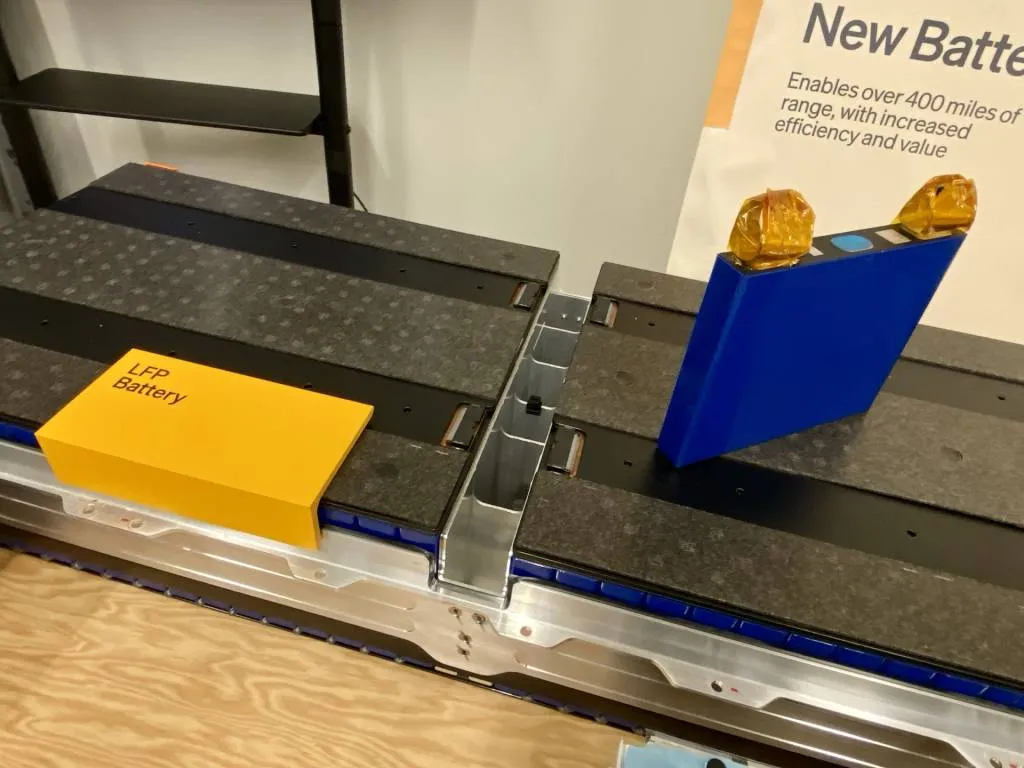
Rivian LFP pack
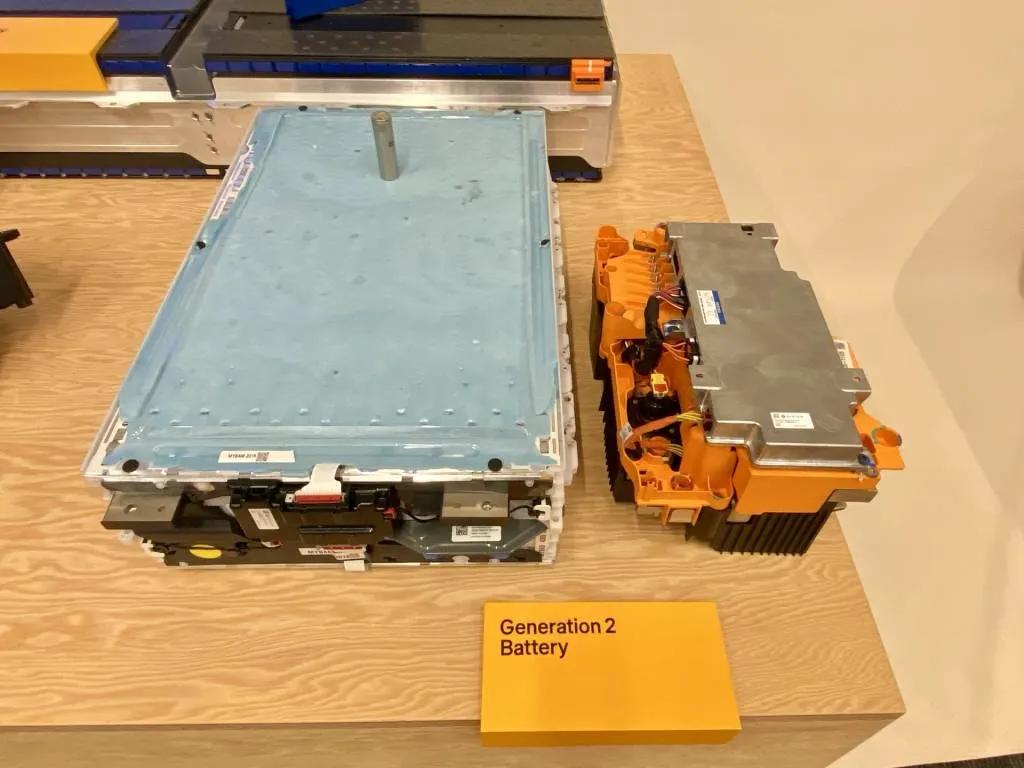
Rivian Gen 2 battery pack
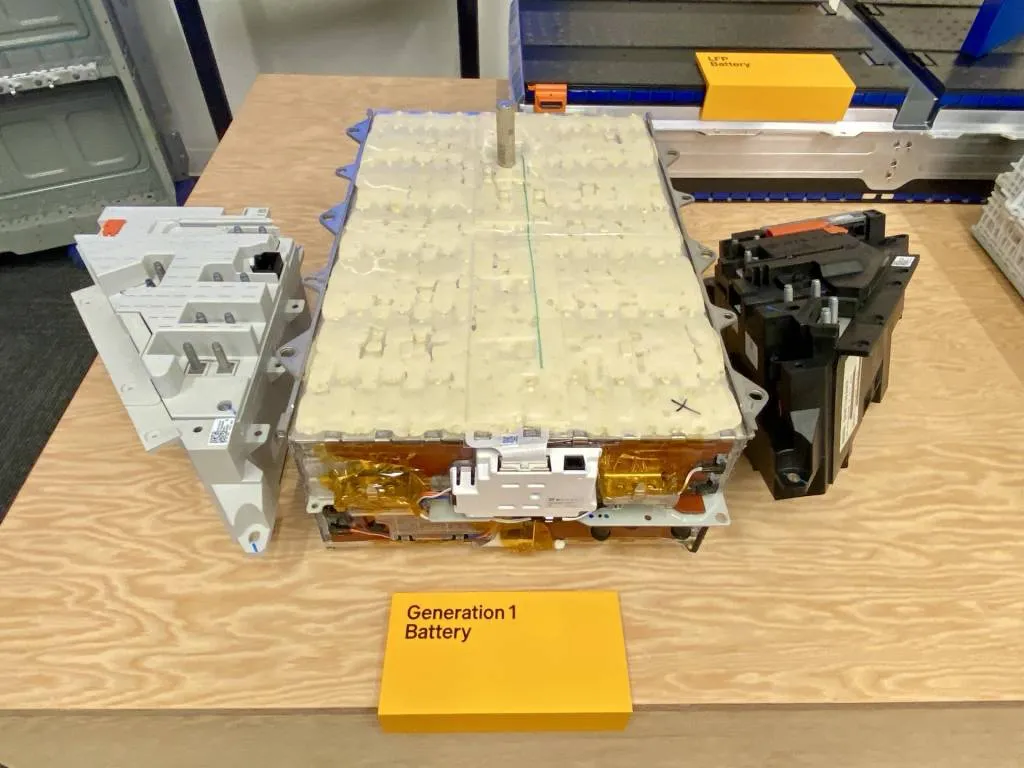
Rivian Gen 1 battery pack
These have Rivian’s new battery-pack architecture, which is an evolution of its previous pack, cutting out some weight and complexity. The battery case itself is high-pressure die-cast versus extruded for more accuracy, saving 55 pounds alone, with 154 pounds of mass saved for the entire battery pack assembly, including a singular unit that incorporates the battery management system.
No 800V—so no big charging boost
On the other hand, the Gen 2 isn’t everything that Rivian had hinted in the past might be coming. It makes no shift to 800-volt, as CEO RJ Scaringe suggested years ago these models might migrate to with their first significant refresh. Rivian has hinted that the R1 lineup is set up for bidirectional charging, but officials shied away from revealing how or when that might be implemented.
Thus, charging hasn’t changed much. Rivian has extended the plateau of the charge curve and made it flatter, but peak charging power for the Large and Max packs remains at 220 kw, while the Standard Pack, with LFP cells, will max out at 200 kw. Rivian says that a 10-80% fast-charge will take 30-41 minutes, depending on the battery, and the lineup is able to add about 140 miles of range in about 20 minutes. Level 2 charging remains at a max 48 amps (11.5 kw), which won’t quite assure a full charge overnight if you have a Max Pack.
And it’s done some serious work to update and simplify the R1’s electrical architecture, while answering issues of “vampire drain” and again optimizing efficiency and simplifying the supply chain. It’s been completely redesigned—with a simpler layout including 7 ECUs versus the previous 17, and the removal of 1.6 miles of wiring from the vehicle. Further, it’s added what it calls a mini DC-DC converter that helps “float” the 12-volt battery at a near-constant state of charge and power lower-power accessories like infotainment and lights.
Outdoorsy folks depend on returning to the state of charge they left, and now Rivian claims industry leading range-loss numbers—with the Gear Guard off, as Gear Guard uses cameras and processing units.
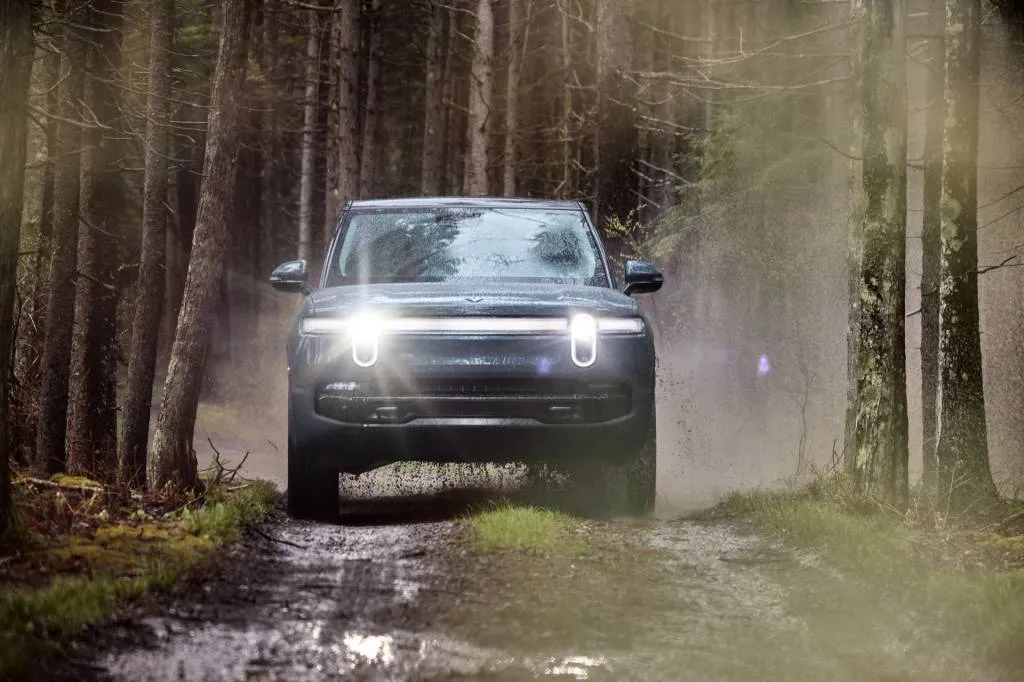
2025 Rivian R1T
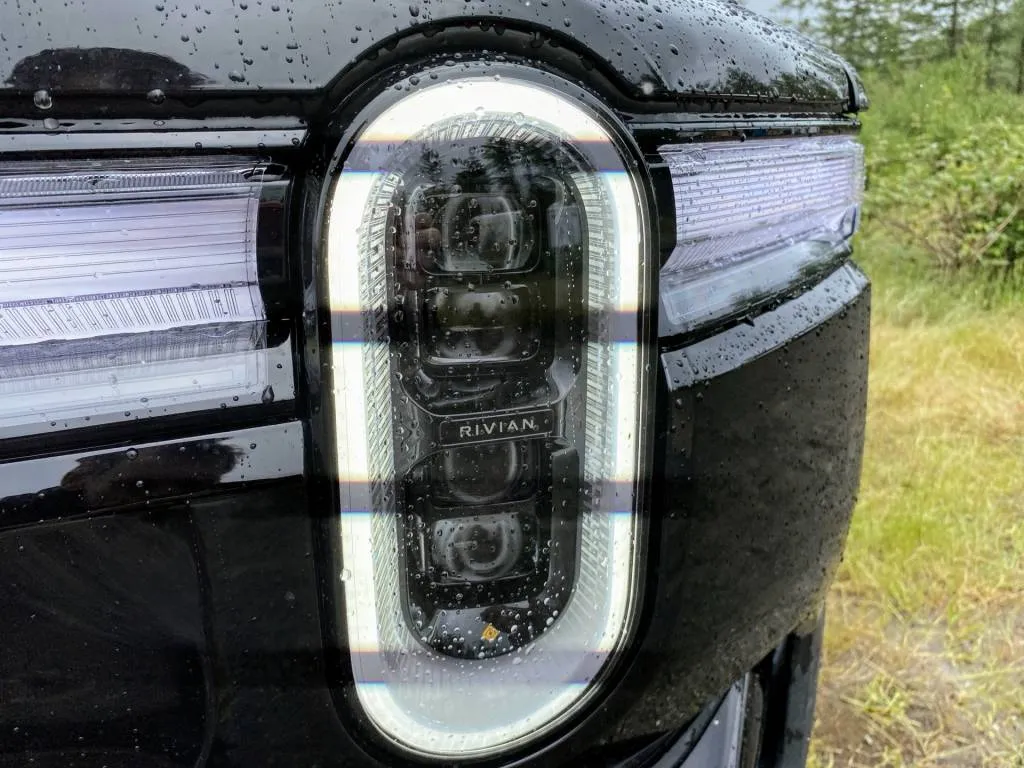
2025 Rivian R1 lineup
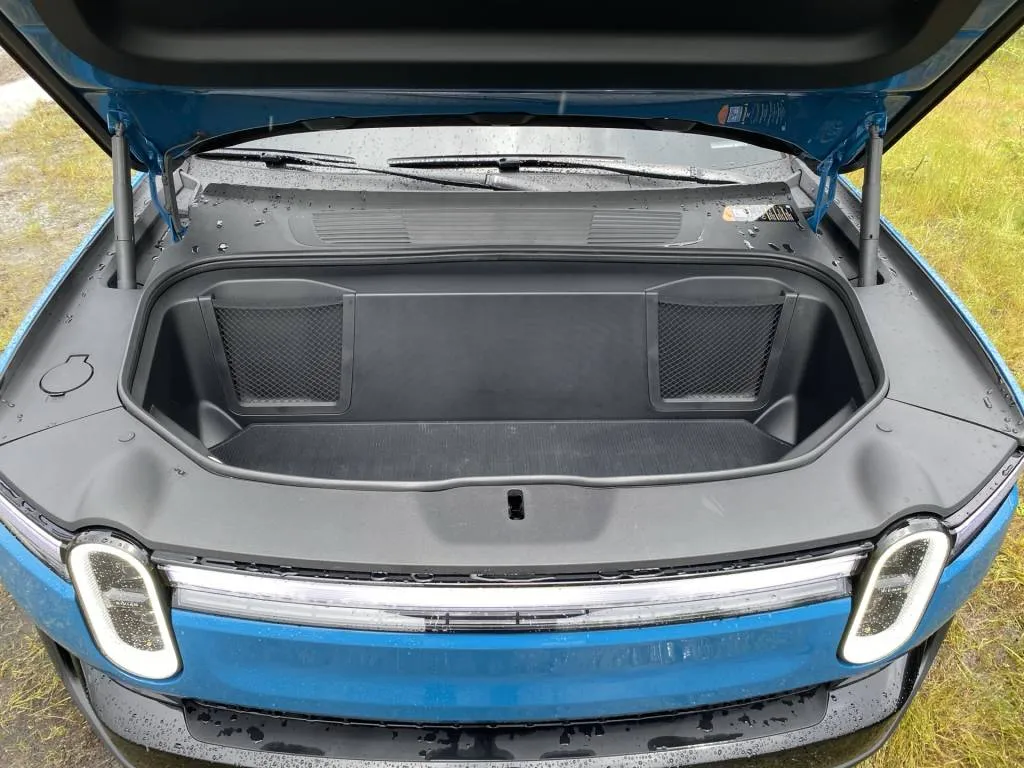
2025 Rivian R1 lineup
R1 lighting works with you
Rivian hasn’t messed with the design of the vehicle, or its unmistakable lightning signature. In fact, it’s made that signature even more distinct—with active-matrix headlamps that have adaptive-beam tech Rivian will enable later this year. The lighting will launch with adaptive cornering functions, with adaptive high beam in its final certification stage and to be enabled with a future software update.
In addition to the new headlights, the lightbar across the front end is now earning its keep. It has 10 individual sections of RGB lighting that can show effectively any color, and one of the initial uses of this is to show the state of charge at a glance in percent. As the executive hinted, between the headlights and the new RGB light bar, it leaves lots of potential for Easter Eggs.
Rivian chief design officer Jeff Hammoud explained that these changes add “a lot more dimensionality” to the appearance of the whole lighting scheme. “It’s still distinctly Rivian, we love the face,” said Hammoud. “It’s really hard to come up with something that’s simple, easy to describe, and iconic, and we’re happy to have it and don’t want to walk away from it.”
The R1 family’s glass roof is new, too, with tinting on demand and a multi-color interior lighting system.
Rivian’s interface has been further flattened for navigability, and for help in revamping its visualizations in the interface, Rivian turned to Epic Games and its Unreal Engine. Splashy visuals aside, it remains one of the most straightforward interfaces on the market—especially if you simply want to check in on all the vehicle systems.
Apart from the UI itself, details that stand out to this correspondent included the new button-based electronic door releases (just a luxury touch as there’s still a manual pull and you can use it as much as you want), and revisited interior upholsteries and surfaces, including a plaid-quilted design for seats and mats.
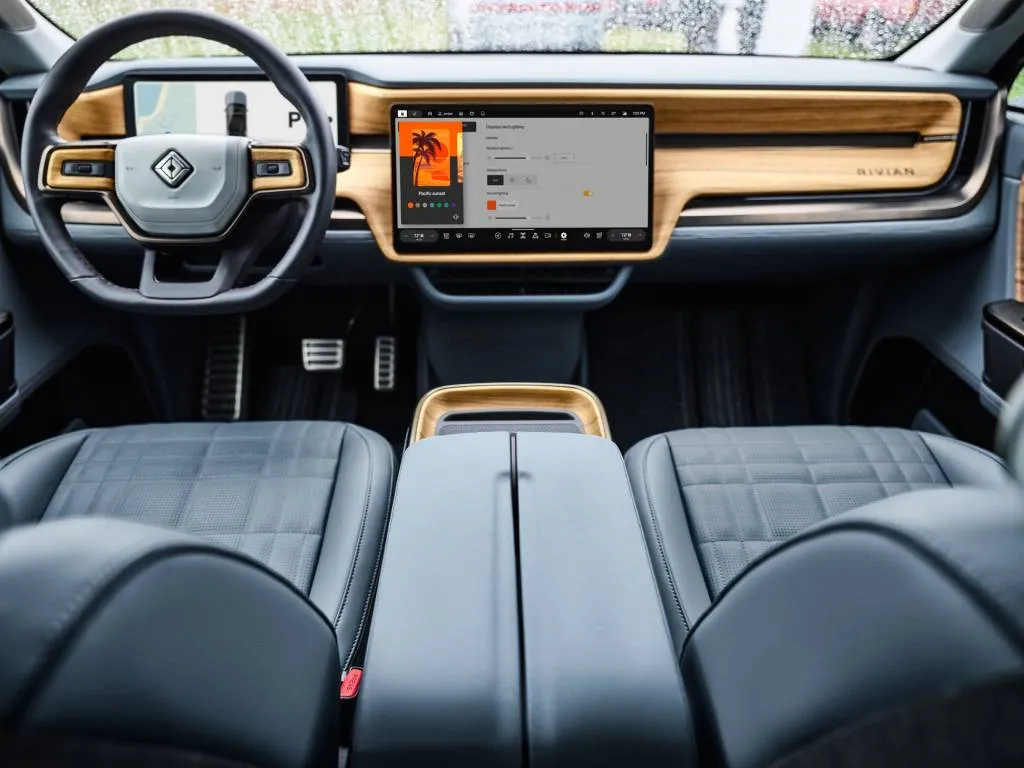
2025 Rivian R1S
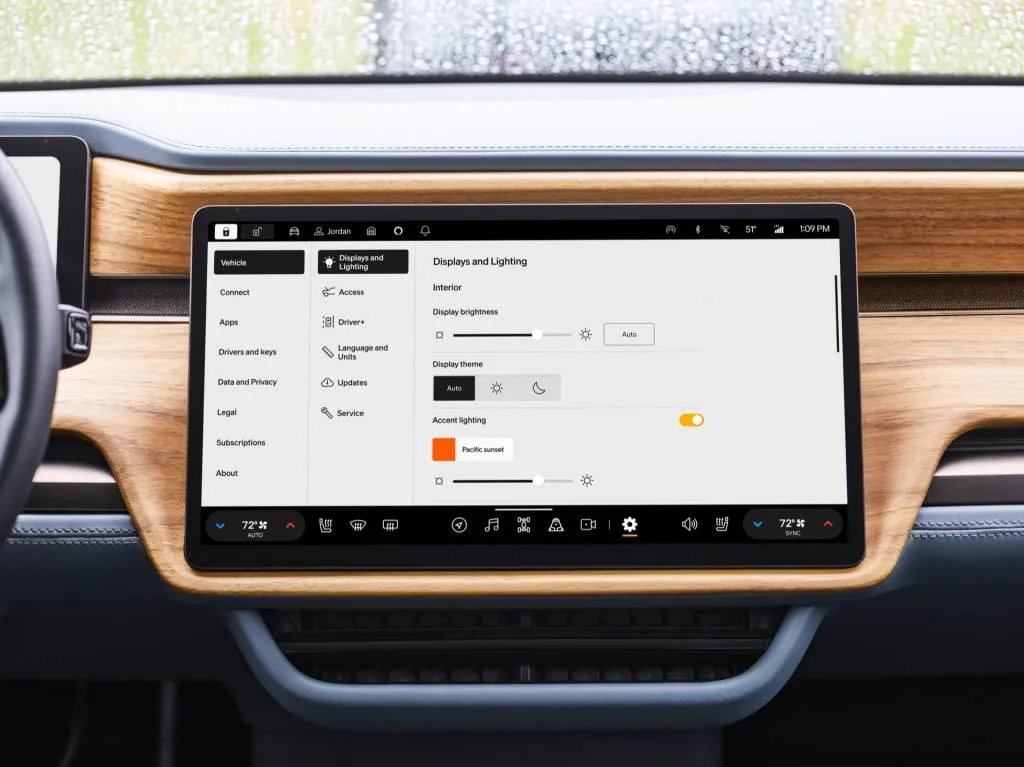
2025 Rivian R1S
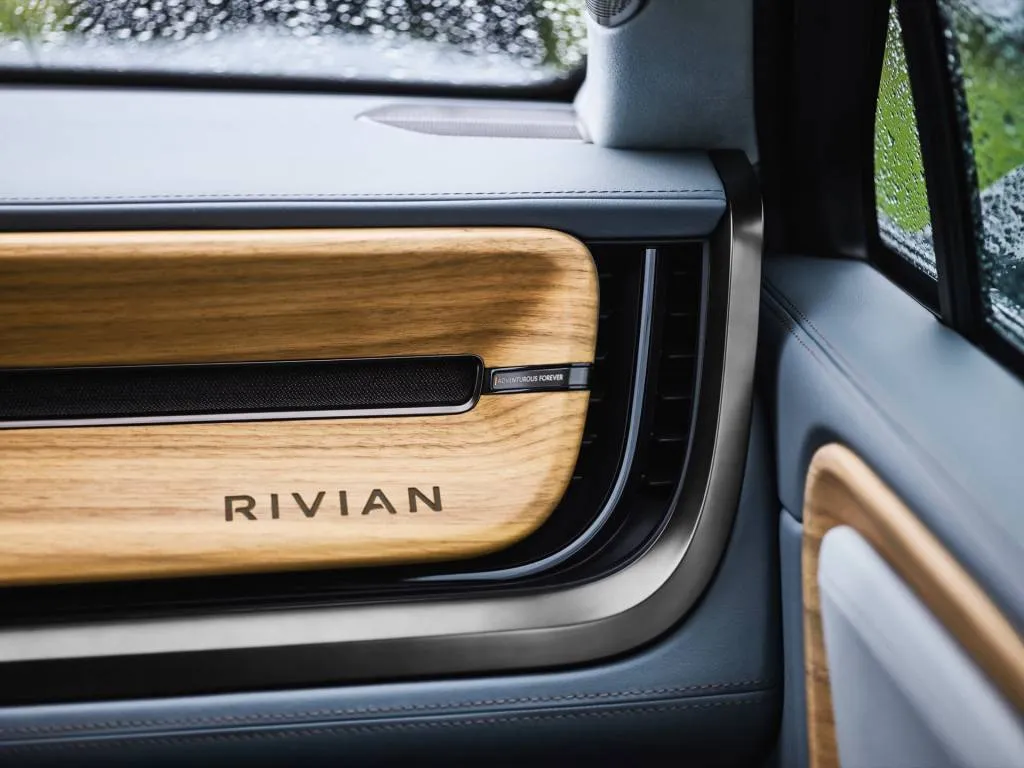
2025 Rivian R1S
Revamped Rivian R1 ride and handling: More lux
Inside, the R1 lineup feels a little more like a luxury vehicle, and it’s less a matter of features than it is how this model rides and handles.
To that point, once the Gen 2 is rolling—even if it’s on city streets—it’s the first thing you’ll notice. Rivian has effectively purged these models’ brittle, sometimes noisy ride by applying a softer tune across the lineups, without affecting handling and quite possibly, when the going gets rough, improving it.
To get there, it increased the front spring rate and lowered the rear spring rate, then applied a new damper tune and new bushings. All versions still ride on air springs, but the retune aims to better work with the rear-biased weight and power delivery of these vehicles.
The suspension work all comes together with the additional Rally and Drift modes gained by Tri-Motor versions. On a muddy off-road course intended for feeling out R1S dynamics, I felt a pronounced difference between the two modes—which mostly comes down to different behavior dialed into the hydraulic roll control.
I also took the R1T out on a rutted off-road course allowing this model to show off its strengths in wheel articulation and overall trail ability. Peak ground clearance is 14.6 and 14.7 inches for the R1T and R1S, respectively. At the deepest point, the light bar on our R1T was lapping up against the water. The R1 trucks can ford around 43 inches of water, so even considering the pouring rain and deep water crossings, we still weren’t close.
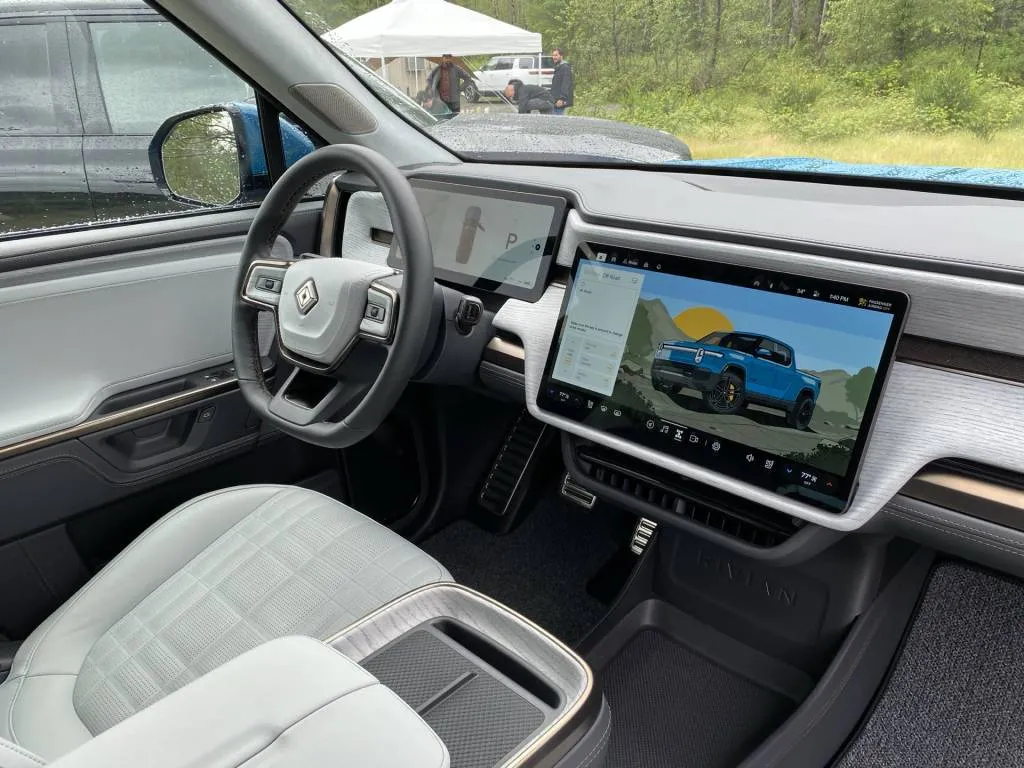
2025 Rivian R1 lineup
Rivian R1 features: Connectivity for sight and sound
Rivian has also completely upgraded its sensing and driving-assist system. In this so-called Rivian Autonomy Platform, 11 cameras, five radar units, and AI algorithms come together to provide 350-degree visibility with eight times the camera megapixels of the outgoing systems, allowing vastly improved vision in inclement weather and challenging lighting situations. Base versions of this system will include blind-spot monitors and driving assistance combining active lane control and adaptive cruise control, while a “plus” version of the system will initially add a driver-initiated lane change and, soon, an enhanced version of the system yet to be detailed.
Rivian is also offering a new premium audio system with Dolby Atmos, and it will launch with Apple Music integration and its Spatial Audio. Rivian Connect+, at $14.99 a month, will enable Apple Music access as well as wifi hotspot functionality and more. Further, any application with Google Cast can now play video (and audio) entertainment on the screen—definitely an asset during charging stops. But you’ll need to understand that there’s no Apple CarPlay (or Android Auto) to fully take your smartphone experience into the vehicle.
Owners can use Apple Wallet on their iPhone or Apple Watch, or some Google Pixel devices, to unlock their Rivian or share keys with family or friends—or give what amounts to a day pass for their vehicle.
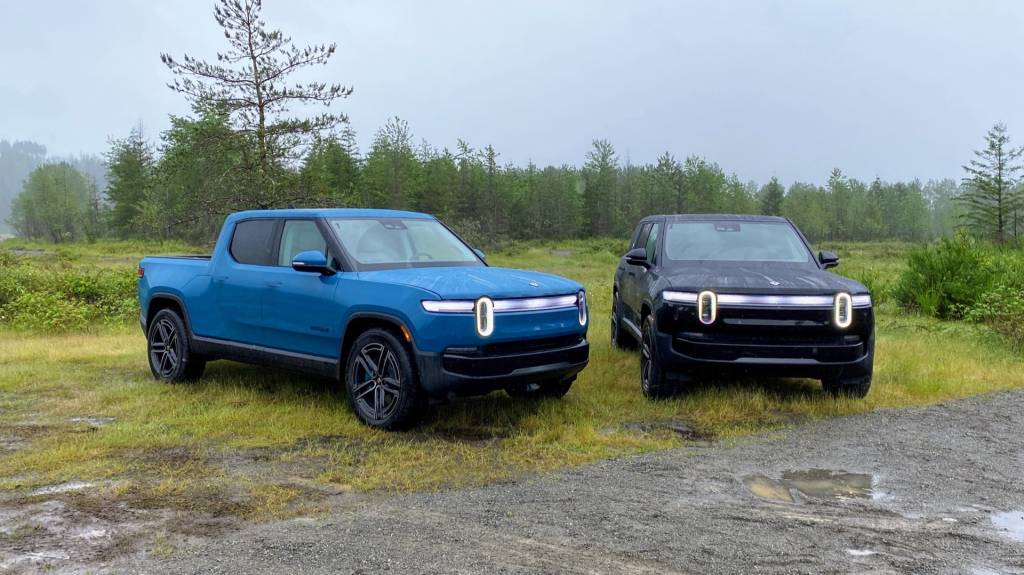
2025 Rivian R1 lineup
Deliveries of the second-gen R1 family start this Friday, June 7, with the 2025 Rivian R1T starting at $71,700 (including $1,800 destination) and the 2025 Rivian R1S starting at $77,700. The lineup tops out for now with Tri-Motor Max Pack versions, costing $101,700 in R1T form and $107,700 in R1S form. Quad-Motor Max Pack models haven’t yet been priced and will be coming a bit later. Rivian’s offering them in Adventure and Ascend trims, with precise feature differences yet to come. The Dual-Motor and Performance Dual-Motor will be only offered in Adventure trim, while the Tri-Motor and Quad-Motor are only offered in Ascend trim.
Meanwhile, final development stages continue on Rivian’s R2 lineup—truly its lifeline for survival. The R2 will likely share the R1’s motor systems and more, but otherwise it will push the envelope in many respects toward mass-market affordability, profitability, and the company’s viability, long-term. Based on what I see here, and what it can roll out to the R1 family, there’s a lot of hope the company can and will deliver that in spades.
Rivian provided Seattle accommodations and some healthy meals to help facilitate this review.

